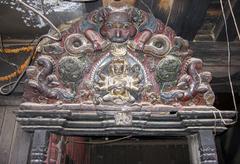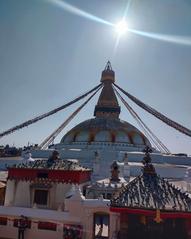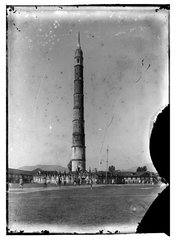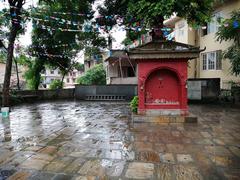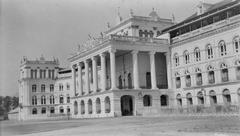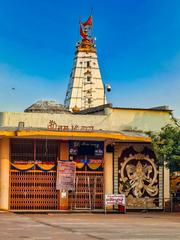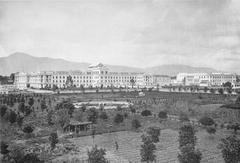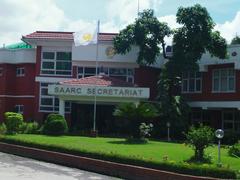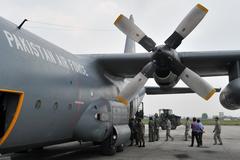
Basantapur Durbar Square Kathmandu Nepal: Visiting Hours, Tickets, and Historical Sites Guide
Date: 14/06/2025
Introduction
Basantapur Durbar Square—also known as Kathmandu Durbar Square or Hanuman Dhoka Durbar Square—is the historical and cultural heart of Kathmandu, Nepal. As a UNESCO World Heritage Site, it stands as a testament to centuries of dynastic history, religious syncretism, and extraordinary Newari craftsmanship. Visitors to Basantapur Durbar Square can expect to encounter a vibrant urban space where ancient palaces, pagoda-style temples, and bustling marketplaces converge. This guide offers comprehensive information on the square’s history, visiting hours, ticketing, accessibility, major attractions, nearby sites, and essential travel tips for making the most of your visit.
For further details on its history, architecture, and visitor guidelines, refer to authoritative sources such as the Nepal Tourism Board, Holly Melody, and Altitude Himalaya.
Table of Contents
- Introduction
- Historical Overview
- Dynastic and Religious Significance
- Social and Civic Role
- UNESCO World Heritage Status and Preservation
- Notable Structures and Features
- Architectural Highlights
- Visitor Information
- Nearby Attractions & Suggested Itineraries
- Festivals and Special Events
- Visuals and Media
- FAQ
- Conclusion
- References
Historical Overview
Origins and Early Development
The roots of Basantapur Durbar Square trace back to the Licchavi period (as early as the 3rd century CE), when the area became a royal residence and a center of trade, culture, and governance (Nepal Tourism Board; Mexico Historico). Early architectural elements reflect the influence of Indian and Himalayan styles.
Architectural Evolution
Malla Dynasty (12th–18th Centuries)
The Malla kings transformed the square into a majestic complex of palaces, temples, and courtyards. Multi-tiered pagoda temples, intricately carved wooden windows, and grand courtyards like Nasal Chowk were constructed during this era (El Take It Easy). Key monuments from this period include:
- Taleju Bhawani Temple (1564): The tallest temple, open to the public only during Dashain.
- Jagannath Temple: Known for its ornate and erotic wood carvings.
- Kumari Ghar (1757): Home of the Living Goddess Kumari.
- Hanuman Dhoka Palace: Expanded in the 17th century and served as the royal residence.
Shah Dynasty and Later Modifications
Following Nepal’s unification, the Shah dynasty preserved and restored the square, adding features such as the neoclassical Gaddi Baithak (1908) (Mexico Historico). The Rana period saw further modifications, especially to ceremonial courtyards.
Dynastic and Religious Significance
Basantapur Durbar Square was the site of royal coronations and state ceremonies until the monarchy’s abolition in 2008. It remains a focal point for Kathmandu’s major festivals, such as Indra Jatra and Dashain (Holly Melody; Attractive Travel Nepal). The square is home to over 50 Hindu and Buddhist temples, statues of deities (like Kal Bhairav), and the unique Kumari tradition—a living goddess revered during public ceremonies (Medium).
Social and Civic Role
Beyond its religious and dynastic history, the square functions as an active civic space. Locals gather in courtyards, shop in traditional markets, and participate in daily rituals. The spatial design of interconnected temples, plazas, and open spaces fosters community interaction in line with Newari urban planning (Medium).
UNESCO World Heritage Status and Preservation
Basantapur Durbar Square was designated a UNESCO World Heritage Site in 1979 for its “exceptional universal value.” The 2015 earthquake caused significant damage, but extensive restoration—led by UNESCO and local artisans—continues to preserve the square’s authenticity (Nepal Trek Adventures; Holly Melody; Attractive Travel Nepal).
Notable Structures and Features
- Hanuman Dhoka Palace Complex: Includes Nasal Chowk (coronation courtyard), Mul Chowk (dedicated to Taleju Bhawani), and the King Tribhuvan Memorial Museum (Altitude Himalaya).
- Taleju Bhawani Temple: The spiritual centerpiece, accessible to the public only during Dashain.
- Kumari Ghar (Kumari Bahal): Residence of the Living Goddess.
- Kasthamandap: Ancient pavilion believed to be constructed from a single tree; the namesake of Kathmandu (Nepal Tourism Hub).
- Gaddi Baithak: Neoclassical hall for state ceremonies (Peregrine Treks).
- Jagannath Temple: Famous for artistic wooden struts (Trans India Travels).
- Shiva-Parvati Temple: Notable for the statues of Shiva and Parvati watching over the square.
- Kaal Bhairav Shrine: A massive stone image central to local rituals.
Architectural Highlights
The square features a harmonious mix of Hindu and Buddhist motifs, pagoda-style temples, neoclassical halls, and exquisite Newari woodwork (Nepal Trek Adventures). Intricate carvings, gilded rooftops, and stone sculptures exemplify Nepalese artistry.
Visitor Information
Visiting Hours
- The square is open every day.
- Public areas: Open 24/7.
- Museums and key monuments: Generally open from 9:00 AM to 5:00 PM; closed on Tuesdays and national holidays (Holiday Stone Nepal).
Tickets and Entry Fees
- Foreign nationals: NPR 1,000 (approx. USD 8.50)
- SAARC nationals: NPR 500
- Nepali citizens: Free with valid ID; children under 10 enter free
- Tickets are available at entrance gates or online (Nepal Tourism Board)
- Ticket includes entry to museums within the square
Accessibility
- Main courtyards and museums are partially accessible; many historic structures have steps and uneven surfaces.
- Wheelchair access is limited; visitors with mobility issues should arrange assistance in advance.
How to Get There
- Centrally located in Kathmandu, close to Thamel and Asan Bazaar
- Reachable by taxi, rickshaw, or local bus; the nearest airport is Tribhuvan International Airport (approx. 6 km away)
- No vehicles allowed inside the square; walking is required for exploration
Travel Tips
- Visit early morning or late afternoon for fewer crowds and optimal light for photography.
- Dress modestly, covering shoulders and knees—especially inside religious sites.
- Remove shoes before entering temples.
- Hire a local guide for deeper historical and cultural insights.
- Carry water, sun protection, and be mindful of personal belongings.
Nearby Attractions & Suggested Itineraries
- Thamel: Tourist district with shops, restaurants, and nightlife.
- Swayambhunath (Monkey Temple): Iconic Buddhist stupa on a hilltop.
- Pashupatinath Temple: Sacred Hindu temple complex.
- Asan Market: Traditional market near the square.
A half-day itinerary can cover Basantapur Durbar Square, its museums, and the nearby market streets.
Festivals and Special Events
Major festivals celebrated at the square include:
- Indra Jatra: Eight-day festival in August/September, featuring chariot processions and the Living Goddess Kumari.
- Dashain: Nepal’s biggest festival, with special rituals at Taleju Temple.
- Gai Jatra: Colorful festival commemorating the deceased.
- Kumari Jatra: Honors the Living Goddess Kumari.
These festivals transform the square into a vibrant stage for traditional music, dance, and communal celebration (Altitude Himalaya).
Visuals and Media
- Include high-quality images of key monuments (e.g., “Basantapur Durbar Square Hanuman Dhoka Palace entrance,” “Intricate Newari wood carvings”).
- Embed interactive maps highlighting entry points and major attractions.
- Add virtual tours or video clips of festivals and temple interiors where permitted.
Frequently Asked Questions (FAQ)
Q: What are the visiting hours for Basantapur Durbar Square?
A: Public areas are open 24/7; museums and main monuments are open from 9:00 AM to 5:00 PM, closed Tuesdays and national holidays.
Q: How much is the entry fee?
A: NPR 1,000 for foreign nationals, NPR 500 for SAARC nationals, free for Nepali citizens with ID and children under 10.
Q: Is the square accessible for visitors with disabilities?
A: Accessibility is limited; some areas are wheelchair-friendly, but many historic structures have steps and uneven terrain.
Q: Can I take photographs inside temples?
A: Photography is allowed in most areas but may be restricted inside certain temples and museums. Always check signage or ask staff.
Q: Are guided tours available?
A: Yes, official guides can be booked at the entrance or through local travel agencies.
Q: What are the best festivals to witness at the square?
A: Indra Jatra, Dashain, Gai Jatra, and Kumari Jatra.
Conclusion
Basantapur Durbar Square is a living mosaic of Nepal’s dynastic history, architectural mastery, and vibrant culture. From the ancient Hanuman Dhoka Palace to the revered Kumari Ghar, every monument tells a story of Kathmandu’s enduring spirit. Whether exploring its courtyards, attending festivals, or wandering its lively markets, visitors gain a profound connection to Nepal’s past and present. Plan your visit with the information provided, and enhance your experience with digital resources like the Audiala app for guided tours and up-to-date tips. For further details and updates, consult Nepal Tourism Board, Nepal Trek Adventures, and Attractive Travel Nepal.
References
- Nepal Tourism Board - Basantapur Durbar Square
- Holly Melody - Kathmandu Durbar Square Guide
- Altitude Himalaya - Kathmandu Durbar Square
- Holiday Stone Nepal - Visitor Experience
- Mexico Historico - Historical Significance
- El Take It Easy - History Behind Kathmandu Durbar Square
- Nepal Trek Adventures - Kathmandu Durbar Square
- Attractive Travel Nepal - UNESCO World Heritage Site
- Peregrine Treks - Kathmandu Durbar Square
- Nepal Holiday - Guide to Kathmandu Durbar Square

